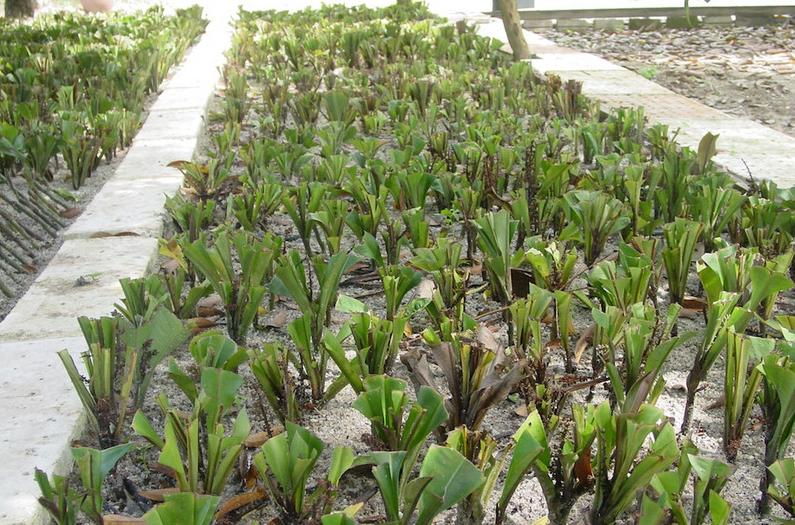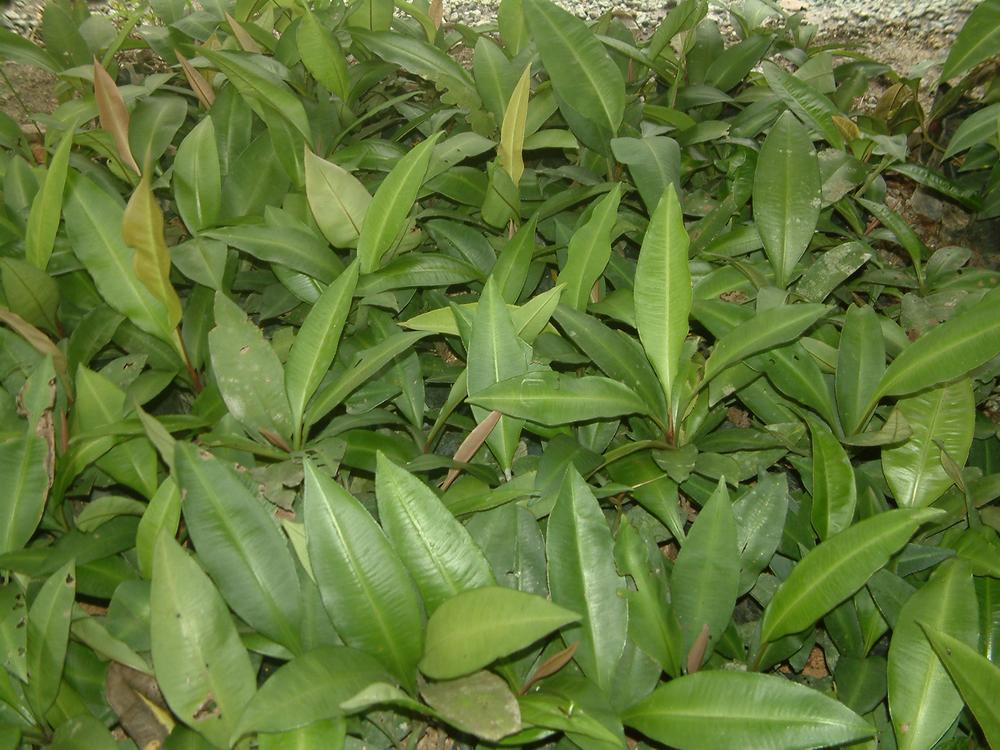Botanical Names
Labisia pumila
Common Names
| Malaysia | Selusoh fatimah, rumput siti fatimah, akar fatimah, tadah matahari, bunga belangkas hutan and pokok pinggang. |
Family
Myrsinaceae
Introduction
‘Kacip Fatimah’ (Labisia pumila) is native plant of Malaysia and grown wild in rainforest about 80-100 metres above sea level. This herb is widely used for women after childbirth to help contract the birth channel, to delay fertility and to regain body strength. Usually the whole plant is used to prepare the water decoction.[1]

Morphological Features
It is a herbaceous shrub with creeping rhizome. The leaves are elliptic lanceolate in shape, the base is alternuate. Petioles are relatively short and slightly flattened. The surface of the leaves is shiny, dark green and lighter green in the margin. The stems are erect, dark brown with distinct scars of fallen leaves. The nodes of the stem are capable of rooting. Flowers are borne on racemes, about 6 cm in length arises from leaf axils. The fruits are berry, globose, red in colour.[1]

Medicinal Properties and Usage
The herb is used by the Malay community to induce and facilitate childbirth, the plant is also used for firming and toning of abdominal muscles, assist women to achieve fuller and firmer breasts and to tighten vaginal muscles, helps to reduce or eliminate painful and difficult menstruation and even to treat dysentery, rheumatism and women’s ailments associated with childbirth, sensational plant which caters to any women’s need.[1][2][3][4]
Soil Suitability and Climatic Requirement
‘Kacip Fatimah’ thrives in shady places, normally as undergrowth in the forests. Thus the environment for the commercial production of ‘Kacip Fatimah’ must have good shade (about 80%) and moist. The production area must be well drained and contain of high organic matter content.[1]
Field Preparation
Land Preparation
For commercial planting, it thus recommended to be planted under field nursery production system. The structure uses black plastic netting for shade. The planting to be used should contain high organic matter contents and well drained. A combination of soil, organic compost and sand should be used. Cocopeat could be used as the mulch to be applied on the soil surface to conserve moisture.[1]
Production of Planting Materials
Presently, the planting materials used in the production of ‘Kacip Fatimah’ are collected from the wild. For commercial planting the plant can be propagated by using stem cuttings. The cuttings should be kept under shade and moist conditions. The cuttings are ready for transplanting to polybags after 12 to 14 weeks and subsequently for field planting after another 14 to 16 weeks.[1]


Field Planting
‘Kacip Fatimah’ is very sensitive to temperature and water stress. Thus production area should be maintained with moist and plenty of shade. It is also sensitive to water-logging and thus it is best to plant the herb on beds. Cocopeat should be used as the mulch to apply on the surface of the bed to conserve moisture. The recommended planting density is 24,000/ha. One hectare of space can accommodate 6 units of shade structure measuring by 30 m X 60 m.[1]

Field Maintenance
Fertilisation
Applying rock phosphate as basal fertilizer in the planting hole at early stage of planting could encourage the better growth of the plant. Organic fertilizer such as processed chicken dung at the rate of 100 g/plant should be given at timeframe of 3, 6 and 9 months after planting.[1]
Weed Control
Weed is not a problem if the mulch such as coco-peat is used. If there is a need, the weeds should be removed manually.[1]
Water Management
‘Kacip Fatimah‘ needs optimum water supply to grow well. The recommended irrigation system to be used for ‘Kacip Fatimah’ is either micro sprinkler or mist systems. These systems are easy to handle, cheap and does not need a large water source. At early stage of planting (1-3 months), watered for twice time a day is must but gradually decrease after 4-12 months after planting to once for fortnight intervals.[1]
Pest and Disease Control
Presently, ‘Kacip Fatimah’ cultivation does not face many pests and disease problems. However, close monitoring should be made for the presence of diseases such as fungus since the growing environment is always wet and moist.[1]
Harvesting
Usually the whole plant is harvested when collection are made from the wild. However for commercial production, only the leaves and the stem harvested after 12 months of planting. Estimated about 200-300 g/plant of fresh materials can be harvested at 12 months after planting. Subsequent harvesting can be done at 3 months intervals (for fresh leaves production).[1]
Postharvest Handling
After harvesting, the herb has to be dried as soon as possible to maintain the quality. For small scale cultivation, the herb can be air dried or under rain-shelter. For long storage the herbs should be dried up to less than 12 % moisture content by using commercial drying oven.[1]
Estimated Cost Of Production
The estimated production cost per hectare of Kacip Fatimah under field nursery production is about RM45,000. This is based on the assumption that the shade structures will last for 5 years. Based on the fresh yield at 6,000 kg/ha, the cost of production for a kilogram of fresh Kacip Fatimah is RM7.50. The production cost was estimated based on the cost of current inputs during writing of this article.[1]
Read More
References
- Musa, Y., Zaharah, A., and Mohd Noh, J. 2010. Kacip Fatimah (Labisia pumila). In Teknologi Penananaman dan Pemprosesan Primer Tumbuhan Ubatan (Musa, Y., Mansor, P., Yahaya, H., Wan Zaki, W.M. and Aini, Z. editor).
- Anon. 2002. Compendium of Medicinal Plants Used in Malaysia (Vol. 2) Pg 176, Kuala Lumpur : HMRC-IMR
- Zahari, I., Norhayati, I. and Jaafar, L. 1999. Kacip Fatimah. In: Malaysia Herbal Monograph Vol. I, Ministry of Health. Kuala Lumpur, Malaysia.
- Musa, Y. Azimah, K. and Zaharah, H. 2009. Tumbuhan Ubatan Popular Malaysia. Pg 83, Serdang : MARDI


